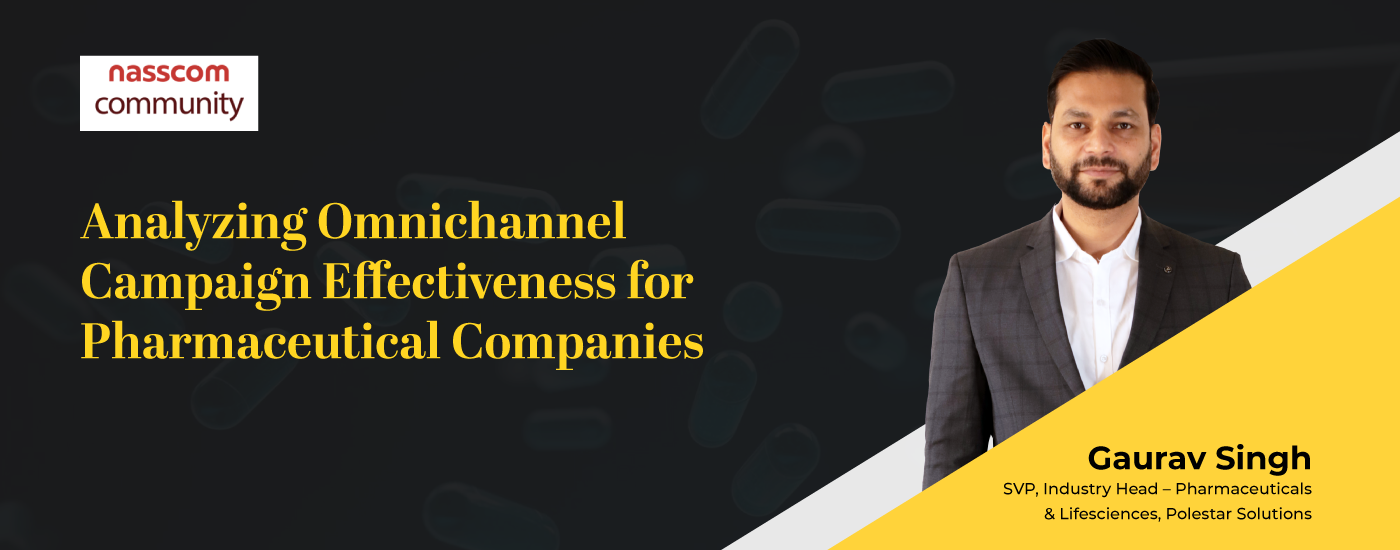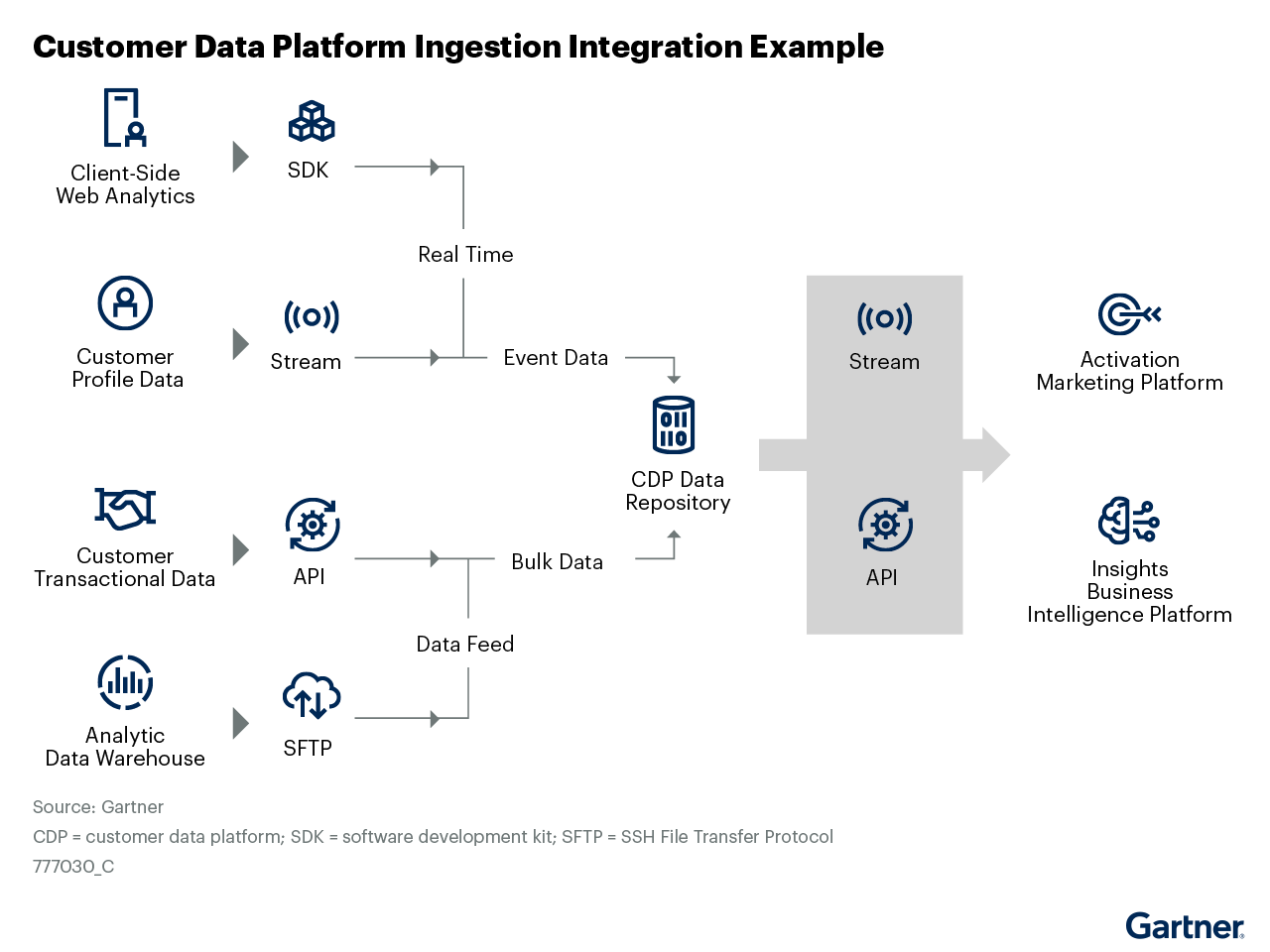
Originally Posted: Community.Nasscom
In a post-Covid 19 world, with behavioral changes, digitized communication channels and rising marketing costs, pharmaceutical companies are looking for innovative ways to reach physicians and ultimately, patients. And in an ever-evolving marketplace which continues to be presented with new challenges while engaging with physicians a more sophisticated and targeted approach is needed to stay ahead of the curve.
The conventional way of marketing thus far has been the multichannel approach which if implemented the right way works well on both customers and businesses side, wherein customers receive information they need, and pharma companies recognize the efficiency of their marketing campaigns. This involves various channels to relay the campaigns’ message to the customer, either via the website, webinars etc. However, this approach often lacks the ability to keep up with the technological advancements taking place in emerging communication channels and the path to purchase.
Enter — Omni-channel for Pharmaceuticals
Omni-channel marketing for pharmaceutical companies goes beyond the multi-channel approach which often tends to repeat the same information and leaves it on the physicians to sift through the information to find what fits best. Omni-channel marketing, on the contrary, does not involve a series of channels but rather one ecosystem enabling companies work in a more customer-centric way by connecting and creating content and marketing materials to meet specific people’s needs.
Over the past few years, the sector has seen sudden changes, the uptick of digital communications, shorter windows to reach prescribers, massive competition, etc. What is important to build is a holistic omni-channel campaign which delivers results in a robust manner.
Omni-channel marketing involves reaching the right physician, with the right information at the right time. The approach enables the interconnection of multiple channels of communication creating a seamless experience powered by customization. It is no secret that customization is the future for business success, and it is no different for this sector. A robust way to be efficient and effective is to ensure that the information received by physicians is delivered to them in a way that resonates best with them, and this is possible to achieve by understanding personalized attitudes ensuring high-impact touchpoints and a strong customer experience.
Creating an Omni-Channel Marketing Model
Analytics led model can change the way pharma companies interact and engage with physicians but oftentimes there is a challenge in terms of not knowing where to start. Many are also uncertain about the impact of such a model in transforming their business model. Advanced analytics has already benefitted various sectors such as retail, e-commerce, media, manufacturing, banking etc. wherein it has improved customer engagement using data as an asset.
Creating an analytics-led omni-channel campaign
In omni-channel marketing, different channels are connected and work together, for example, a physician can receive an email with information catered to his/ her needs, the CTA directs them to the pharma companies’ website which might have information on an upcoming event in their city which they might be interested in attending. The physician/ healthcare practitioner (HCP) registers for the face-to-face event where they will meet representatives from the company, as well as peers/ industry experts thereby closing the communication loop. All the content was generated and orchestrated to meet specific needs and interests via omni-channel communications. Healthcare practitioners too receive tailored information and an engaging experience, just what they are looking for now in a world of seamless digital sophistication.
All in all, personalized content and messages for individual physicians, results in better allocation of resources, upgrades the quality of work, better skills adaptation and overall greater impact. Continuous feedback via analytics results in predictive and optimized power for the analytics system.
To get started, most companies have the data sets required such as interactions with physicians, content & sales data, demographics and market data as well as market-research surveys which also provide vital information. Integrating and ingesting these different data sets to a customer data platform can get a holistic view of the physician such as the market context, who they are, their feedback etc. providing impactful touch points on prescribing preferences and ensuring the right treatment for patients. All these insights are a good starting point to ensure improvements in the channel mix, product positioning, content generation for targeted messaging to individual physicians etc.

By linking and analyzing various data sets mentioned above such as sales data, data via interactions with physicians, market data, messaging data, product data etc. advanced analytics makes it possible to get insights to understand physicians needs and requirements as well as improve engagement and experience.
Firstly, descriptive analysis of markets helps contextualize the historical data and determine what has happened in the past and enable micro-segmentation across channels to provide a deeper understanding of the physicians' journey and ensure the use of personalized content/ messaging to enable physicians to serve patients better.
Secondly, predictive analytics along with machine learning and AI-powered analytics helps understand a variety of scenarios in the future at specific moments in time, such as expectant patient numbers, initiation of patients, prescription of drugs etc. All this guides towards optimizing sales team deployment across segments and geographies where physicians are present.
Thirdly, agile content delivery ensures messaging is always targeted and personalized. By using predictive modeling, content can be personalized at the individual physicians’ level coupled with information from micro-segmentation and a test and learn approach which ensures content delivery is effective, real-time and refined.
Lastly, advanced analytics ensures optimization of engagement with a physician at the right time, with the right frequency using the right channel mix with the right messaging which can maximize impact while addressing existing market challenges as well as keeping in mind the brand objectives. Feedback constantly adds to keeping the system updated with suggestions and recommendations for future interactions.
Additional use-case: Leveraging Generative AI to personalize content
Right now, one of the hottest topics even in the pharma world is Generative AI and how it can be leveraged to increase productivity and improve performance. Few of the most common use cases are generating personalized content at individual physician level by inputting data at segmentation levels coupled with demographic data. Also, it can also be useful to create chat bots with all the necessary knowledge for enabling sales with technical knowledge and/or additional information based on trends as analyzed from feedback from other channels.
Implementation of Omni-Channel Marketing for Pharma
The process of setting up an analytics-enabled omnichannel model requires pharma companies to build a strategic customer-centric vision keeping in mind the business objectives, test and learn about the product and its launch within a region/ territory, define a project team and structure, leveraging data analytics, and then replicate the model for different products and regions.
Advanced technologies such as AI, NLP and Generative AI are shaping the future of the industry enabling pharma companies to better understand the customer, predict behaviors, and streamline processes to generate content more efficiently and in a targeted manner. Today, personalization has become the norm; by creating unique individualized experiences across touchpoints using data and analytics, companies can stay ahead of the digital curve.
Author: Gaurav Singh — Senior Vice President, Industry Head – Pharmaceuticals & Lifesciences Polestar Solutions
Unlock the power of omnichannel strategies in Pharmaceuticals and lifesciences. Dive into campaign analysis insights!